Inca Religion › Early Explorers of the Maya Civilization » Ancient origins
Articles and Definitions › Contents
- Inca Religion › Ancient History
- Early Explorers of the Maya Civilization: John Lloyd Stephens and Frederick › Antique Origins
Ancient civilizations › Historical and archaeological sites
Inca Religion › Ancient History
Definition and Origins
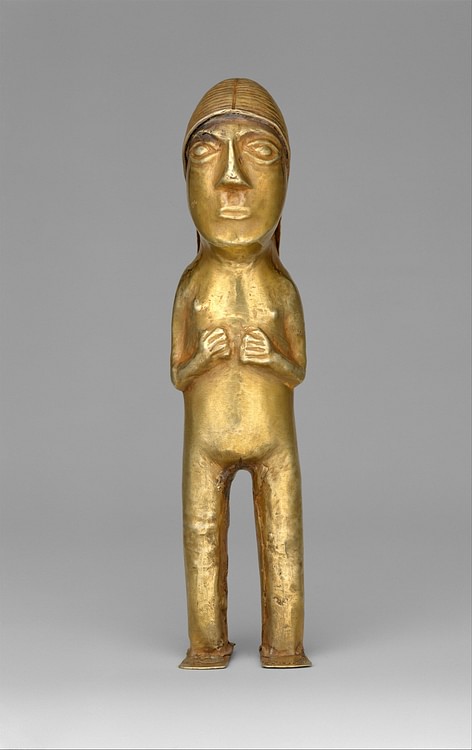
Religion was for the Incas, as with many other ancient cultures, inseparable from politics, history, and society in general. All facets of community life were closely connected to religious beliefs, from marriages to agriculture, government to burials.Success and failures of any kind in life were due to the influence of the gods and the Inca ’s ancestors. Keeping these figures content and avoiding their wrath in the form of natural disasters such as drought and earthquakes was a very important purpose of religious practices. The Inca religion was also an important tool for the ruling elite to legitimize both their own privileged position within Inca society and to spread the general belief of Inca superiority over the subjects of their vast Empire.
INFLUENCES & LOCAL TRADITIONS
Inca religion was influenced by earlier and contemporary Andean traditions, especially the Wari civilization and ancient Tiwanaku. Indeed, for all the state endorsed religion imposed by Cuzco, many local communities still adhered to their own traditional beliefs throughout the empire even if they were forced to adopt the major Inca gods as well. One such continuing Andean tradition was the belief in a specific founder of the community and an association with a particular spot where that person had emerged from the earth - a paqarisqa.
The long-standing worship of the Sun, Moon, stars and planets amongst ancient Andean communities were other beliefs perpetuated by the Incas. Shamans too, with their feared ability to cast spells and particular skill at divination by reading unfathomable signs in fires, llama's intestines and such like, remained important figures in the Inca world. Cuzco was reputed to have 475 of them, the most important being the yacarca, the personal advisor to the king. Yet another millennia-old Andean tradition which the Incas continued was the belief in oracles - the most famous being at Chavin and Pachacamac.
INTI WAS THE MOST IMPORTANT INCA GOD AS HE WAS THE GOD OF THE SUN AND THE PATRON OF EMPIRE AND CONQUEST.
CREATION OF THE WORLD
For the Incas themselves, the world was created at Lake Titicaca, long previously considered a sacred place for Andean people and visited by Inca rulers in regular pilgrimages. The creator god Wiraqoca Pacayacaciq (or simply Viracocha ) one day, on the sacred Island of the Sun on Lake Titicaca, made a race of giants but, finding these too large for his purpose, instead made humans on a smaller scale. This first race of humans upset Viracocha with their greed and arrogance and so as punishment he turned some of them to stone and others into the earth and natural features. Then he sent a great flood to wipe the earth clean, saving only three humans so that they might start the race again. Also at Lake Titicaca, Viracocha then made the Sun, Moon and stars. Next, the god went travelling around disguised as a beggar and known as Kon-Tiki, amongst many other names. He made carvings at Tiwanaku, established Cuzco by directing the Inca founding couple Manco Capac and Mama Ocllo there, and generally taught people the civilizing arts. Then, when he arrived at the coast, he mysteriously walked away across the sea to the west, promising one day that his messengers would return.

Viracocha
INTI & THE TEMPLE OF THE SUN
Inti was the most important Inca god as he was the god of the Sun and the patron of empire and conquest. His home of plenty was also the destination in the next life for those who lived good lives in this one. The Inca king or ruler was considered divine and a living descendant of Inti legitimizing the Inca divine right of rule. A gold statue of Inti, represented as a small seated boy and known as Punchao, was kept in the Temple of the Sun, at the Coricancha ( Qorikancha ) sacred complex at Cuzco. With rays projecting from his head and decorated with gold jewellery, the stomach of this figure was used as a receptacle for the ashes of the burned vital organs of previous Inca kings. Each day the statue was brought outside of the temple to bask in the sun. Following the Spanish conquest the figure was removed and hidden, never to be found again. So too, the gold which covered the exterior and interior of the Temple of the Sun, all 1,400 kilos of it, was spirited away by the European invaders. In addition to the Coricancha, Inti had the temple-fortress complex of Sacsahuaman dedicated to him, located just outside Cuzco.
The well-being of the king and the Inca Empire and the guarantee of a good harvest were entirely in the hands of Inti. The god was served by a dedicated High Priest ( Villaq Umu ), the most senior religious figure in the Inca world, who was aided by a team of young virgin priests, the acllas (also acyllyaconas ). Each major Inca town had a temple to the god and a vast amount of resources were dedicated to him. Even land and herds were reserved especially for Inti and a whole province near Lake Titicaca was set aside for him. The Coricancha went one step further where a maize field complete with life-size llamas and shepherds was constructed out of pure gold and dedicated to the Sun.
One of the most important ceremonies in worship of Inti was the 8-9 day Inti Raymi, held every June (winter) solstice on a plain outside Cuzco. Sacrifices were made, libations of water and chicha beer were offered, and all the nobility and priesthood participated in a lavish festival of feasting and singing which also marked the beginning of the ploughing season. Another important festival in honour of both Inti and Viracocha was the Qhapaq Ucha when all towns across the empire were expected to send one or two of good-looking children ( copacochas ) to be sacrificed at the ceremony in Cuzco and in the subsequent procession in pilgrimage to various important sacred sites across the Inca world. Death was by strangulation or having their hearts removed, and this offering was believed to guarantee the continued well-being of the ruler and his people.
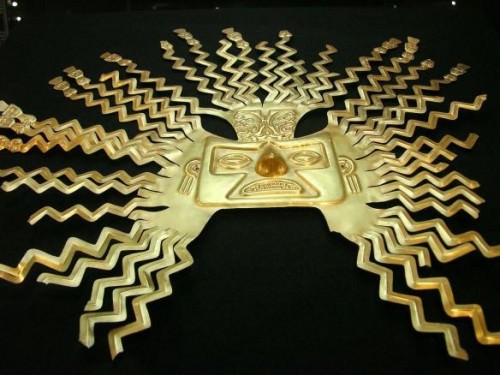
Inca Gold Sun Mask
OTHER GODS
Besides Inti, the sacred Coricancha also had a temple to the Moon goddess Mama Kilya, one to the creator god Viracocha, and another to Illapa the god of thunder, the latter temple being called Pukamarka. Mama Kilya was considered important as she governed the ceremonial calendar whilst Illapa brought rain and storms - the thunder being produced as he wielded his sling while the lightning came from the flashing of his silver robes. Both Cuichu the rainbow god (for the Incas a bad omen) and the personification of Venus (Chaska-Qoylor) had their own temples alongside the others within the sacred Coricancha complex.
Lesser deities, although still important in their particular domains, included the earth goddess Pachamama in whose honour farmers built a stone altar in the centre of their fields where they could easily offer sacrifices in the hope of a good harvest.Pachamac ('Earth Maker') was a celebrated oracle and creator god, especially in the provinces. Particularly associated with earthquakes, he had an entire temple city, Pachacamac, built in his honour, where there was a great wooden idol of the god, which pilgrims visited to hear its advice. Finally, the coastal people held Mamacocha ('Mother of the Lakes and Seas') in particularly high regard. These gods and others had over 400 shrines in Cuzco alone.
The Incas were keen observers of celestial bodies and had mastered their movements and cycles. Accordingly, stars, constellations, and planets also had their personified representations, especially the Pleiades (Qollqa), the Milky Way (Mayu), Orion 's Belt, and Venus (Chaska Cuyllor). In general it seems that all creatures had their own particular stellar equivalent which somehow governed and protected all its physical specimens on earth.
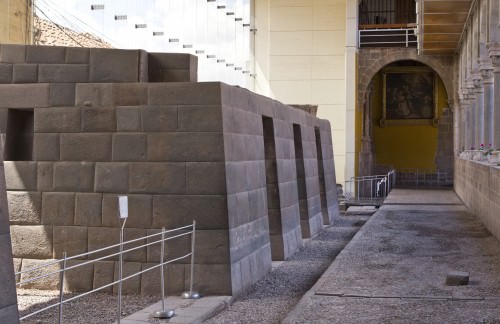
Coricancha
MODE OF WORSHIP
The Inca gods, then, were worshipped with the construction of temples ( wasi ) and sacred sites ( huacas ) where ceremonies were held, prayers made, and offerings given. A hierarchical priesthood conducted such ceremonies, their status depending on that of the god they served. The gods were kept satisfied and the status quo maintained via the sacrifice of precious goods and animals, especially llamas (white ones to Inti, brown ones to Viracocha, and dappled ones to Illapa). Humans, including children, were also sacrificed (even if on a smaller scale than other Americas cultures), typically by hitting them on the head while under the effects of alcohol which was given to them so that they might be happy when they first encountered their god.These more dramatic offerings were generally reserved for times of great strife such as prolonged droughts, solar eclipses, or a royal death. Human sacrifices also occurred after victories in war and were offered in many of the high mountain sacred shrines which dotted the empire.
HUACAS & CEQUE
The Incas believed that gods, spirits, and long-dead ancestors could be manifested on earth in the form of natural features such as mountain peaks ( apu ), rivers, springs, caves, rocky outcrops, and even peculiar shaped stones. These places were sometimes modified to accentuate unusual features and were treated as shrines with special power to influence reality. They were known as huacas ( wak'a ) and, in the case of stones, were taken for safe-keeping in palaces and tombs, on occasion, even transported on military expeditions. People left offerings at huacas, especially sea shells, textiles, coca, precious goods, clay figurines, and sacrifices were made, most commonly of llamas and guinea pigs.
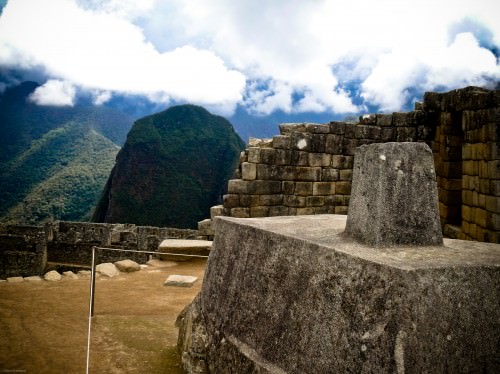
Intihuatana Stone, Machu Picchu
Huacas could also be places used for astronomical observations. Perhaps the most famous is the 'hitching post of the sun' ( intihuatana ) at the highest point of Machu Picchu which was used to symbolically connect the sun to the earth via a special cord on each solstice. The most important sighting post was, though, the usnu - a raised platform in a plaza at Cuzco. This had a stone pillar used for astronomical observations and an adamantine throne for the Inca king to watch religious festivals from.All of these sacred sites - some 328 - were then linked to Cuzco, the centre of the Inca world, by 41 lines known as ceque ( zeq'e ) which could be physical trails or sight lines thus creating an imaginary sacred web with Cuzco at its heart.
ANCESTOR WORSHIP & MUMMIES
Older generations ( ayllu ) were never forgotten in Inca society and tombs were re-opened at particular times in order for people to make new offerings to the deceased. These took the form of precious goods and food, and sometimes even purpose built channels permitted the pouring of libations into the grave without otherwise disturbing it. Particularly important individuals who had passed away could be represented in the community by statues, especially the founder of the community whose idol was the most precious object in a community. Indeed, the Incas exploited this tradition and often kidnapped the idols of conquered communities, keeping them hostage at Cuzco to ensure the compliance of the vanquished.
The bodies of important community members were often mummified, principally using processes involving desiccation and alcohol, and then wrapped in textiles and bound with cords in a fetal position. The mummies were then placed in tombs, in special rooms in a community mausoleum, or placed in sacred caves ( machay ) - most famously in the highlands of Cajatambo where over 1,800 mummies were discovered by the Spanish.
Internment was not usually permanent as mummies were occasionally brought out of their tombs so that they might in some way participate in important community events such as marriages and harvests. The most famous participation of deceased ancestors in the lives of the living was the role of mummies of former rulers, the mallquis. These were pampered during important ceremonies at Cuzco, dressed in fine clothes and even ritually fed. Their opinions were 'consulted' by priests and dedicated attendants ( mallquipavillac ) when important decisions had to be taken and they were honoured guests in the Inti Raymi festival.
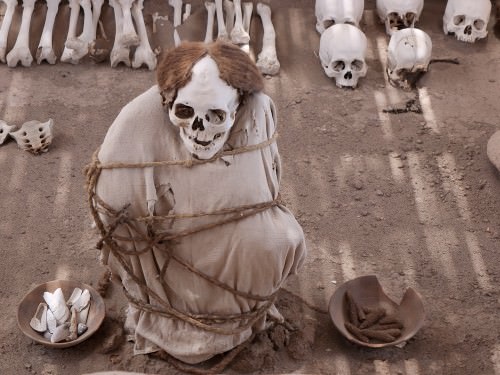
Ancient Andean Mummy Bundle
THE DEMISE OF THE INCAS
It is interesting to note that following the downfall of the Incas their state religion and, in particular, the worship of the Sun, quickly fell out of favour with communities outside Cuzco who had long preferred the Moon as their principal god. The Inca-built temples and the land set aside for Inti were abandoned as religious sites and put to other uses. People abandoned the solar calendar and reverted to their time-honoured practices of worshipping their own gods, sacred sites, and ancestors. The local beliefs of the ancient Andean peoples proved resilient then but, in a way, so too did unique elements of the Inca religion, as, in a late 20th century CE revival after centuries of Catholic domination, many of the Inca ceremonies and traditions, notably the Inti Raymi festival and mountain pilgrimages, were revived and continue to be annually re-enacted in modern-day Peru.
Early Explorers of the Maya Civilization: John Lloyd Stephens and Frederick › Antique Origins
Ancient Civilizations
The names of John Lloyd Stephens and Frederick Catherwood are forever linked to the Maya and Mayan studies as the two great explorers who documented the ruins from Copan in the south to Chichen Itza in the north. The stories told by Stephens in his Incidents of Travel in Central America, Chiapas and Yucatan (1841) and Incidents of Travel in Yucatan (1843) complemented by Catherwood's illustrations, focused international attention on the Maya civilization. Catherwood's publication of his book of lithographs Views of Ancient Monuments in Central America, Chiapas and Yucatan (1844) furthered the world-wide interest and lifted the Maya civilization out of obscurity and into world consciousness.
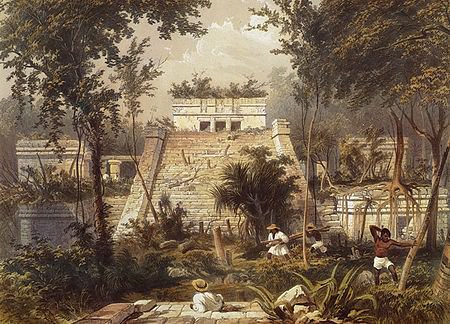
Temple at Tulum by Catherwood
As noted elsewhere, Stephens and Catherwood were not the first explorers of the ancient Mayan sites (though they are routinely designated so). They were, however, the first to visit so many sites and, more importantly, to document what they found there with precision and accuracy.
John Lloyd Stephens was born 28 November 1805 in Shrewsbury, New Jersey, graduated Columbia with a law degree, and practiced law in New York until he was diagnosed with a throat infection. Following the advice of his doctor, Stephens left New York for a change in climate and traveled extensively through Europe, the Mediterranean, Asia Minor, Palestine, and Egypt. These travels would result in the publication of his first two books, Incidents of Travel in Egypt, Arabia Petraea and the Holy Land (1837) and Incident of Travel in Greece, Turkey, Russia and Poland (1838) both of which were immensely popular and earned Stephens the nickname `the American Traveler'.
Frederick Catherwood was born 27 February 1799 in north London and, by his twenties, was already well known as an architect, artist and traveler. He had already published his drawings of structures in Egypt, Palestine, Asia Minor, and Greece and, in 1833, was the first westerner to survey and draw the Dome of the Rock in Jerusalem. The two men met in London in 1836 where Catherwood's panorama `The Ruins of Jerusalem' was on display. Both men were interested in exploring the region so vividly depicted in the published accounts of Mesoamerica by earlier explorers like Antonio del Rio and Juan Galindo and the drawings of Mayan sites by Jean-Frederic Maximilien, Comte de Waldek (Drew, 54-56).They agreed to travel together to the region at the first opportunity.
MANY OF THE NOW-FAMOUS MAYA SITES WERE UNKNOWN EVEN TO THE INDIGENOUS PEOPLE OF THE REGION.
Stephens was famous enough as a world traveler and writer to have President Van Buren appoint him Ambassador to Central America from the United States and he and Catherwood left New York for British Honduras (modern day Belize) on 3 October 1839 (Drew, 37). Though conscious of his diplomatic duties, Stephens was primarily interested in exploring the ancient ruin of Copan and then moving on to Palenque. At this time, many of the now-famous Maya sites were unknown even to the indigenous people of the region. The centuries had slowly covered the great temples and pyramids and turned them into mounds of green hills. Only a few cities of the Maya were known to exist at this time, among them Copan, Palenque, Topoxte/Tayasal (called `Islapag' by Galindo) and the mysterious unnamed city deep in the jungle (which came to be known as Tikal ). There were no accurate maps of the region and the two men often discovered sites through word of mouth in conversation (one example of this being Catherwood's discovery of Quirigua). They traveled without any of the extensive entourage which usually accompanied 19th century explorations. They had only a guide, some men to carry equipment, and a crudely drawn map which they had already been told was inaccurate. Even so, this did not stop them from exploring the jungles of Mesoamerica in search of the ancient sites which they had heard of and read about. In his Incidents of Travel in Central America, Chiapas and Yucatan, Stephens writes of his first impressions of Copan:
Diverging from the base, and working our way through the thick woods, we came upon a square stone column, about 14 feet high and three feet on each side, sculptured in very bold relief, and all four sides, from the base to the top. The front was the figure of a man curiously and richly dressed, and the face, evidently a portrait, solemn, stern, and well fitted to excite terror. The back was of a different design, unlike anything we had ever seen before, and the sides were covered with hieroglyphics. This our guide called an `Idol' and before it, at a distance of three feet, was a large block of stone, also sculptured with figures and emblematical devices, which he called an altar.The sight of this unexpected monument put at rest at once and forever, in our minds, all uncertainty in regard to the character of American antiquities, and gave us the assurance that the objects we were in search of were interesting, not only as the remains of an unknown people, but as works of art, proving, like newly discovered historical records, that the people who once occupied the Continent of America were not savages.
Stephens paid fifty dollars for the city of Copan and, as he says, was thought a fool by the owner for buying such useless land.He hoped to move the city en masse to a museum in New York but found no means of doing so. He became convinced, after only a short time in the region, that the theories regarding Hebrew or Egyptian or Atlantean origins for the Maya ruins and glyphs were wrong and that the structures and language were both autochthonous. Having mapped and recorded the site of Copan, they moved on through the jungle, mapping and recording sites such as nearby Quirigua and Zaculeu on their way to Palenque.
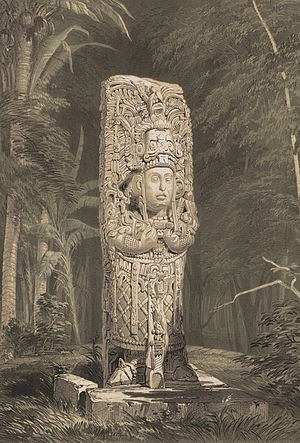
Stela D at Copan by Catherwood
Stephens and Catherwood explored each site together and then set themselves to their respective tasks of writing and drawing the area. Catherwood used a device called the camera lucida which would project the image from the lens onto paper so that the artist could draw it more accurately. It is because of the use of this device that Catherwood's depictions of the Mayan sites are so precise right down to the intricate scroll work and inscriptions on the buildings (Danien, Sharer, 15).Although some have criticized his work as `overly romantic', his lithographs have been used by Mayanists in the modern day in helping to restore the buildings and temples depicted in his work. Catherwood does sometimes seem to take license in placing items, objects, or figures in a composition for artistic purposes but the depictions of the buildings themselves are regarded as completely accurate. At Palenque, Catherwood contracted malaria but continued to work in spite of his illness. Stephens describes him as refusing to rest and continuing to draw wearing gloves and netting to keep the mosquitoes away. Stephens' narrative is very descriptive in detailing the problems encountered with ticks, mosquitoes, stinging flies, bats, and mice not to mention having to hack through thick jungle and clearing the sites enough to see what lay beneath the overgrowth.
In New York, Stephens had met a man named Simon Peon who owned a large tract of land in the northern Yucatan called Hacienda Uxmal and had provided Stephens with a rough map to find the ruins he said were there. Leaving Palenque, and stopping at any site they came across or heard about, they made their way up to Uxmal. Among the sites they discovered or documented on this trip were Copan, Kabah, Merida, Palenque, Quirigua, Q'umarkaj (Utatlan), Sayil, Tonina, Topoxte, and Uxmal. Although they did not visit Tikal, Stephens mentions the white towers of the city and notes their approximate location.They remained at Uxmal, documenting that site extensively, until 31 July 1840. By this time, Stephens had also contracted Malaria and they left the Yucatan for the United States. The book which was published from these travels fascinated the world and prompted another trip to the Yucatan (this time along with Dr. Samuel Cabot) in 1841-1842 which resulted in the publication of Incidents of Travel in the Yucatan and, later, Catherwood's book of lithographs, Views of Ancient Monuments in Central America, Chiapas and Yucatan. On this second trip they documented sites such as Ake, Chichen Itza, Dzibilnocac, Itzamal, Labna, Mayapan, Tulum, and re-visited Uxmal. They mapped, surveyed, drew and wrote about 44 distinct Maya sites all of which have become national treasures and, some, world famous attractions.
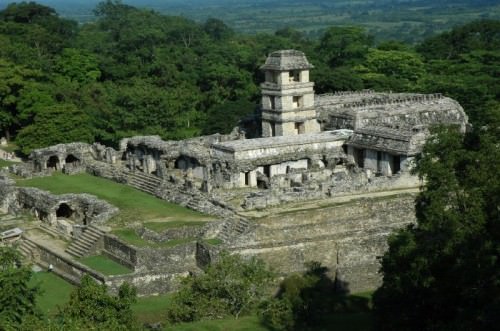
Palace, Palenque
After the second trip both men decided to retire from travel. John Lloyd Stephens directed his energies to running the Ocean Steam Navigation Company and, after that, the Panama Railroad Company. He personally went to Panama to oversee the laying of the track and clearing of the land. Either in Panama or Bogota he is said to have suffered an accident and this, along with the toll taken by his travels, is thought to have caused his death on 13 October 1852 at his home in New York at the age of 46. Frederick Catherwood went west after their adventures and opened up a supply store in San Francisco, California to capitalize on the miners flocking there after the Gold Rush of 1849. His reputation endured as an artist, however, and his works were displayed in Manhattan salons and galleries. Returning from a trip to London aboard the SS Arctic in 1854, Catherwood was among the over 350 passengers who died when the ship entered a thick fog bank and was rammed by the steam ship Vesta on 27 September. He was 55 years old.
The work they did lay the foundation for all future study of the Maya civilization. They meticulously documented the sites they visited, carefully charted the courses they took, and logged the time in travel between one site and the next. In reading Stephen's narrative, and following the maps drawn by Catherwood, other explorers were able to expand upon their work to bring the Maya Civilization to light. In 1857 Desire de Charnay arrived in the region and used their work to help chart his own exploration to more Mayan sites. Teobert Mahler also made use of their books in his photographic journey of the sites in 1876. In 1891 Sir Alfred Percival Maudslay came to the region and dramatically changed the scope and depth of all further excavations. Maudslay is understood as the first explorer to employ a strict scientific method in excavating and examining the sites of the ancient Maya. He helped to preserve and protect many notable sites and set the standard for future expeditions and excavations. Following Maudslay, many very notable explorers made further great advances in clearing, documenting, and photographing the Maya sites. William Holmes began work at Palenque in 1895, the same year Teobert Maler documented Tikal, and was followed by Alfred Tozzer. In 1914, Sylvanus Griswold Morley first came to the region, best known for leading the team which excavated Chichen Itza in 1923. In 1925 Franz Bloom so extensively documented Palenque that his work, like Morley's, remains important reference material for Mayanists in the field today. In less than one hundred years since Stephens and Catherwood began their first journey, the Maya Civilization had become recognized as one of the greatest produced by the ancient world.
LICENSE:
Article based on information obtained from these sources:with permission from the Website Ancient History Encyclopedia
Content is available under License Creative Commons: Attribution-NonCommercial-ShareAlike 3.0 Unported. CC-BY-NC-SA License